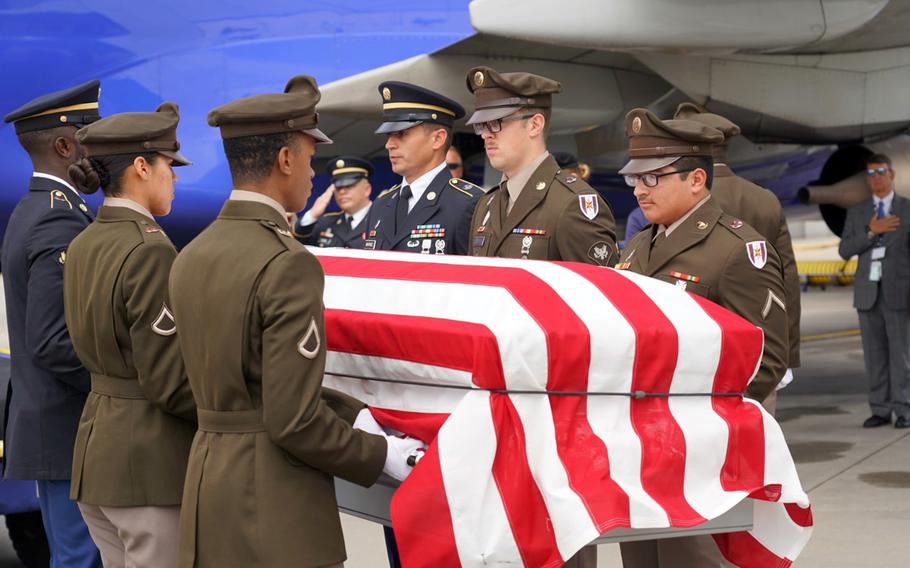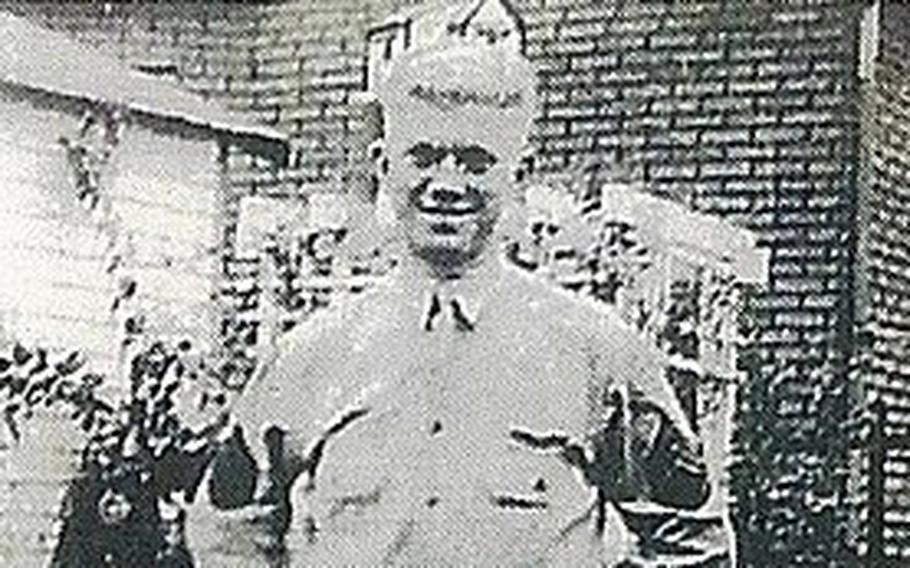
A casket holding the remains of U.S. Army Air Forces Staff Sgt. Robert Ferris Jr. is carried from a plane at Raleigh-Durham International Airport, N.C., May 16, 2024. (North Carolina Department of Military and Veterans Affairs)
A U.S. Army Air Forces staff sergeant was laid to rest Monday in North Carolina, eight decades after he went missing when his bomber was shot down over France during World War II.
Robert Ferris Jr., whose remains were accounted for last fall, was buried with full military honors at New Bern National Cemetery, according to a news release Monday from the state’s Department of Military and Veterans Affairs.
“Bringing SSgt Ferris home will help his family find some measure of closure,” Grier Martin, the department’s secretary, said in the release. “After eight decades, this coming Memorial Day will have additional meaning to SSgt Ferris’s family.”
Ferris served in the 401st Bombardment Squadron, 91st Bombardment Group, Eighth Air Force, according to an online biography posted by the Defense POW/MIA Accounting Agency, which officially accounted for him on Sept. 22.
The 91st had the highest losses of any Eighth Air Force bomb group, with 197 aircraft reported missing in action during the war, according to the American Air Museum in Britain’s website.
The group suffered 887 killed and 123 missing in action, and claimed the most enemy aircraft destroyed, 420, according to the 91stBombGroup.com, a memorial website.

Army Air Forces Staff Sgt. Robert Ferris Jr. was buried in North Carolina on May 20, 2024, after his remains were recovered and identified more than 80 years after his bomber was shot down over France during World War II. (Defense POW/MIA Accounting Agency)
On Dec. 20, 1942, Ferris was a gunner aboard a B-17 Flying Fortress that took off from Cambridgeshire, England, for a bombing mission against targets around Romilly-sur-Seine, France, the DPAA biography states.
The bomber, with its nine-member crew, was shot down by a German fighter plane and crashed near the village of Bernieres-sur-Seine.
One crew member bailed out before the crash and later reported the remaining crew had all died, DPAA said.
After the war ended, the American Graves Registration Service disinterred four sets of remains from the city cemetery in Evreux, France.
One set was identified as belonging to the B-17’s top turret gunner, but the other three could not be identified, the DPAA states. Those remains were buried as unknowns at Normandy American Cemetery.
Historians with the entity that preceded DPAA began reanalyzing the case in 2011 and determined there was enough evidence to pursue the case, DPAA said.
In 2019, the Department of Defense and the American Battle Monuments Commission exhumed the three sets of unknown remains believed to be associated with the bomber crew, DPAA said.
The remains were transferred to the DPAA’s lab in Hawaii where Ferris was identified.